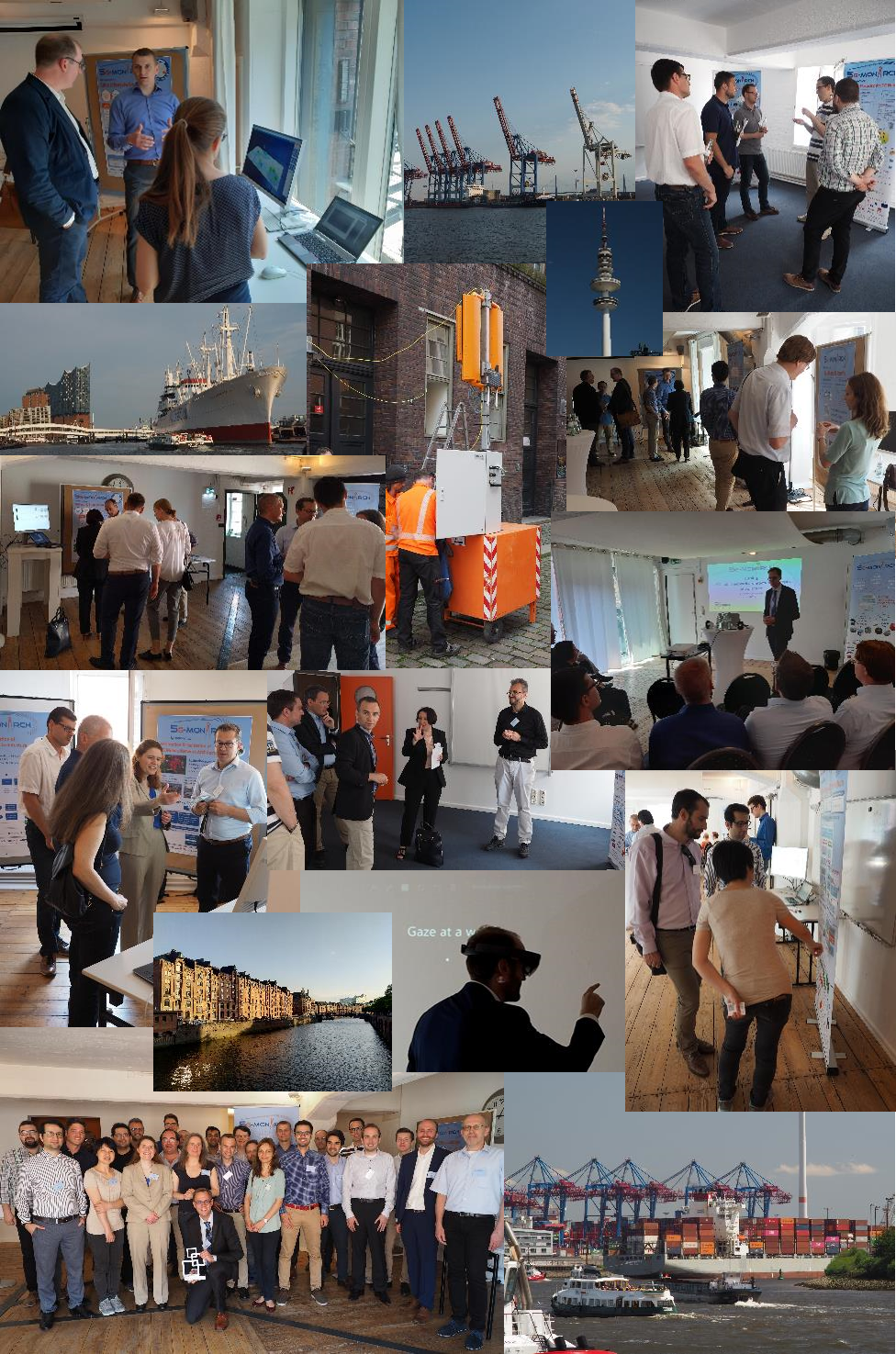June 5th, 2019 – Hamburg – Smart Sea Port testbed and overall project research results – download flyer
- Presentation of the Smart Sea Port testbed and live experience of the implemented industrial applications for improved sea port operations
- Presentation of main conceptual and research results of the 5G-MoNArch project on 5G mobile network architecture, resilience & security, and resource elasticity (including demonstrations)
- Presentation of the technical results verification and the socio-economic validation of results – what benefits do the solutions provide to ports and industry (including live demonstrations on simulation results)
A live demonstration of all use cases and aspects of the Hamburg Smart Sea port testbed (poster), together with a presentation of the main results of the research and innovation work conducted in 5G-MoNarch, was presented in an event organised by 5G-MoNArch on June 5th, 2019 in the premises of Dialoghaus Hamburg.
This event was organised in form of an exhibition, where each of the use cases implemented in the Smart Sea Port testbed (overview poster) as well as its operation was demonstrated live at a dedicated booth to the auditory (see details below). Furthermore, each of the technical work packages of 5G-MoNArch was represented with a dedicated booth, in form of posters and additional presentations. Finally, the Turin Touristic City testbed provided an insight on its implementation and experience. At the beginning of the event, two introductory talks were given: an introduction to the scope and setup of 5G-MoNArch including an overview of the exhibition, and a presentation on the challenges and solutions for the future seaport, providing the perspective of HPA on the outcome of the Smart Sea Port testbed implementation.
This event targeted the research community as well as stakeholders of industrial 5G use cases and seaports. The around 40 participants of the workshop represented 20 companies and institutions external to the project consortium, indicating the high relevance of the presented topics and the testbed showcases given. Several port operators (besides HPA, the ports of Le Havre, France, and Montreal, Canada were present), IT service providers (e.g., a representative of the IT integrator of the port of Rotterdam) and other companies active in the area of sea ports, mobile communications and related businesses were present. Particular interest was given to the techno-economic analysis results conducted as part of 5G-MoNArch WP6.
Exhibition booths for the Smart Sea Port testbed:
- Network slice creation and management – fast and scalable service-specific networking: real-time design, creation, deployment and deletion of network slices in the live testbed through the testbed’s GUI
- Network slice isolation – highly reliable traffic light control: impact of slice isolation on the performance of the traffic light control, in particular with respect to latency; since the actual traffic light of the testbed is installed at a road far away from the event location, for the purpose of the event, a mobile traffic light has been installed in front of the building, such that the isolation impact could directly be seen
- Multi-connectivity – IoT sensors on mobile barges for air quality measurements: the live measurements from the three barges roaming in the port could be monitored together with network KPIs from the multi-connectivity as well as the multi-slice modems installed
- New services – eMBB improved port operations using connected Augmented Reality headsets: two dedicated demonstrations of the AR applications were given to the visitors in particular to visualise the importance of the digital technologies within the smart sea port scenarios
Exhibition booths for the technical work packages and the Turin Touristic City testbed:
- Touristic City testbed demonstration (posters and video recording from the event in Turin on May 22-24, 2019)
- 5G flexible and adaptive architecture (WP2) – functions supporting and enabling a diverse range of use cases and services (poster and slides) and their interconnection with different representations (reference point and service-based); including the highlights of the novel concepts introduced by 5G-MoNArch
- Resilience, reliability and security (WP3) – functions for enabling industrial use cases (poster) through dual connectivity, data duplication and network coding as implemented in the Smart Sea Port testbed
- Resource elasticity (WP4) – functions for enabling multimedia & entertainment use cases (poster and slides) with different approaches for elasticity, the architectural implications and the concepts for the use of Artificial Intelligence for elastic management & orchestration
- Verification of technical results (WP6) – setup of verification methodology and the evaluation framework, and results for relevant KPIs (poster and slides)
- Techno-economic verification (WP6) – what benefits do the solutions developed by 5G-MoNArch provide to ports and industry (poster and slides), including an introduction of the evaluation scenarios used for the analysis
